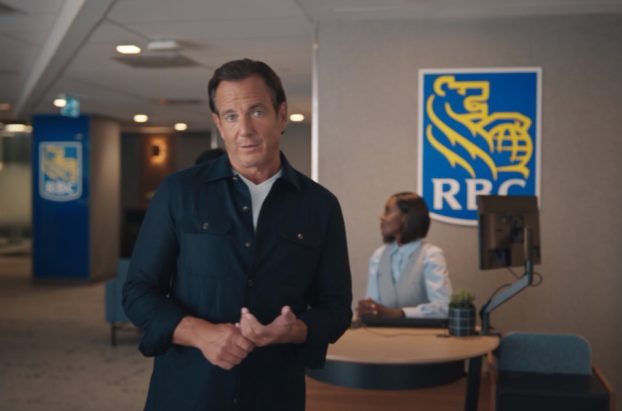WestJet, in the customer experience realm, has few rivals. It has managed to figure out that in the big, bad world of branding, customer service is almost everything.
‘A brand is nothing more than a promise,’ says Bill MacDonald, director, strategic planning and business development at Toronto-based Brandworks. ‘The onus on the brand is to deliver that promise.’ And that’s why, despite the growing pains for the Cinderella-story brand recently, he says WestJet still reigns.
‘There’s a great distance between Bay Street and Main Street,’ MacDonald adds, a sentiment confirmed in strategy’s national poll in which the Calgary-based company received an overwhelming number of votes in its category. Kudos this year have also come from Canadian Business, which named it one of the country’s best-managed brands and consultancy firm Toronto-based Waterstone Human Capital which conducted a poll of 107 business executives across the country and named it the company with the most admired corporate culture.
Despite a year that’s included a lawsuit, enormous fuel price increases and a couple of lackluster quarters, WestJet has managed to begin its rebuilding with some major marketing wins.
One of the most impressive is the success it’s had so far in targeting Ontario.
Key to that has been leveraging a well-honed warm-and-fuzzy culture, which is one of the brand’s overwhelming strengths. ‘The driver for our brand is our people,’ says Sean Durfy, EVP marketing and sales (86% of the company’s employees are shareholders). ‘What our people drive is the experience that our guests receive.’
In kind, WestJet is spending 70% of its ad budget (Taxi is the AOR) to promote customer service in an effort to get the East to fly West. The first series of ads earlier this year, highlighting the airline’s leather seats and satellite TV, was an effort to educate the new target market.
‘We knew that people didn’t even know who we were,’ Durfy says. ‘We had to get people in to try us and not look at us as a discount airline.’
The current phase of advertising focuses more on stellar customer service, showing very likeable, regular people as WestJet owners. Durfy himself is full of on-flight stories of attendants rocking babies or racing to pass on left-behind cellphones. (The latter is a scene in one of the ads.)
It all seems to be working. ROI on the first phase of the campaign was about 35%, Durfy says. And its brand health (defined by brand equity and consumer perception) in Eastern Canada jumped about six points from 80.
‘It takes years to get a 10 point lift [in brand health],’ he adds. ‘The message is resonating.’ Incidentally, the brand is very robust and
rosy-cheeked in Western Canada,
scoring 208; average for most companies is about 110.
‘We have to, in the new year, continue to drive the culture of this business and to share that with more and more people, and that’s through our brand,’ says Durfy. ‘We have to able to take those [brand values], throw them to the folks in the East and give them the ability to try us. We think we can hook them and keep them.’
Also on the horizon for 2006: ‘You’ll continue to see us expand our product line. We’d like to have a vacation-package line.’
Plans are also in the works to expand its transporter markets and look into partnerships with other international airlines, much like Air Canada has as part of Star Alliance. ‘We’ll look at building that over the next year. That will be a big play for us.’
Durfy estimates that the company currently has about 28% of the business traveller market, a number that it plans to increase. But, he’s quick to add, that it won’t lose sight of what it calls VFR – the visiting friends and relatives market.
‘We’ll never lose focus on [them]. That’s bread and butter for us; that’s what built our airline.’
WestJet in 2005
* DEFINED THE BRAND STRATEGY: ‘The first thing we did in the past year was formalize our strategic plan,’ says EVP marketing and sales Sean Durfy. ‘We started out as a regional airline and we became a national airline over the last two years. Our growth was so fast that we didn’t have the time to stop, do the appropriate research and then really target and strategically manoeuvre the company.’ Now the company has built a brand map that outlines the vision, values and messages of the brand’s personality, which include customer service and passionate employees/shareholders. ‘We’ve been able to incorporate those [elements] in all of the messaging that goes out to the market.’
* REDESIGNED THE WEB SITE: The Web site was made more user-friendly as part of a focus on the brand’s point-of-sale strategy: ‘We drive about 68-70% of business through our Web site. We’d like to get that up to 75%.’
* ESTABLISHED NEW PARTNERSHIPS: During the year, WestJet also focused on more e-marketing by partnering with other organizations.
* TARGETED THE EXECUTIVE: Nine out of 10 people who fly WestJet fly it again. To reach the highly coveted, frequent-flying business market, the company created a corporate sales team to solicit business from firms.























